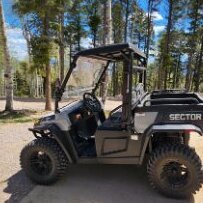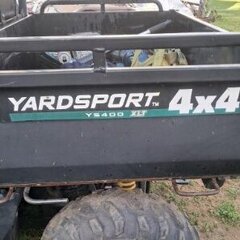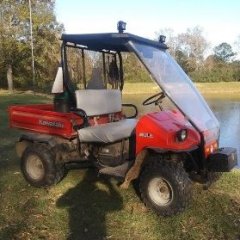Oil Fill/Check on early 90's Mule 1000
-
Similar Topics
-
By hdtran
That's the question! Or, if you want to add details:
(a) How do you use the UTV? (roads? off-road to get to trees? etc.)
(b) If you are wearing a helmet--how frequently? What type of helmet?
My own answers: (a) Most of the time off-road to get to downed trees, cut the trees to logs and haul the logs back for splitting. (b) Very rarely, a ski helmet and not a motorcycle helmet.
-
By BernieG
I could really use some help identifying some disconnected components on a Yard Sport YS400. The first part is this pipe, which comes out of the exhaust port area or the cylinder. It looks like it had a piece of rubber hose on it, but the hose is gone, and I have no idea what it was previously connected to.
The second item is this vacuum valve looking thing. Again only one line is still attached. What is it's function and what other lines should be connected to it?
The last thing is this hose, which exits the side top of the fuel tank (not the fuel line hose) but is not connected to anything
Any help the community could provide would be greatly appreciated. This UTV belongs to a friend, and I am trying to help him get it running correctly for his kids.
-
By Retired Plumber
The rear differential lock light is on and I would like to get it off. How do I do that it is a Coleman UTV700.
-
By Steve B
My "R" light on the dash will not go out when I take the UTV out of reverse and put it into any other gear. Is this just the light switch issue or will this effect engine performance in the other gears?
-
By Travis
Many people have issues with the kawasaki FJ400 engine fouling out spark plugs, after working on a few FJ engines and 600 series Mule's with this issue, i can say the fix for this issue is using a slightly hotter spark plug... the factory recommends a BPR6ES NGK plug.... the Number in NGK plugs represents its heat range and somewhat odd, the lower the number the hotter the plug, at least as far as NGK is concerned. If you have a Mule fouling spark plugs try installing a NGK BPR4ES spark plug.
FROM NGK
A hotter heat range spark plug has an insulator design with a longer heat flow path to the metal shell of the plug. As a result, more heat stays in the ceramic firing end and less is dissipated to the engine. A colder heat range spark plug has an insulator design with a shorter heat flow path to the metal shell of the plug. As a result, less heat stays in the ceramic firing end and more is dissipated to the engine. For a spark plug to function properly, it must have a tip temperature high enough to burn off carbon deposits (self-cleaning) and avoid fouling, while remaining low enough to avoid overheating the ceramic firing end and pre-ignition.
-








Recommended Posts
Join the conversation
You can post now and register later. If you have an account, sign in now to post with your account.
Note: Your post will require moderator approval before it will be visible.